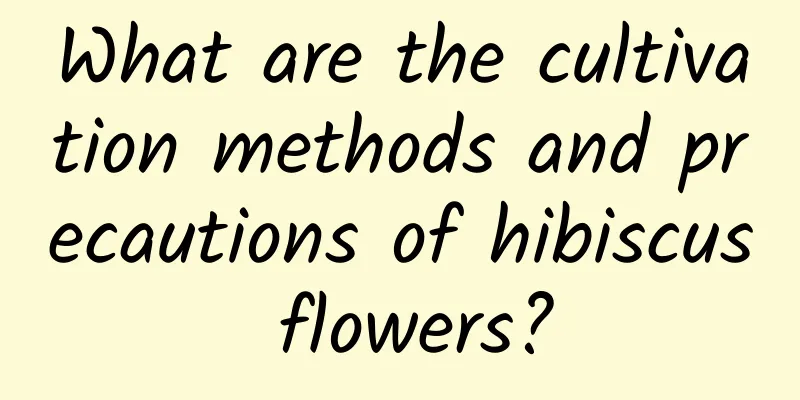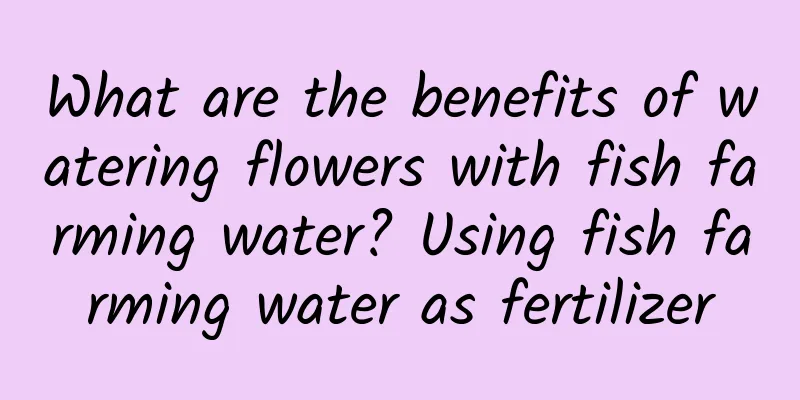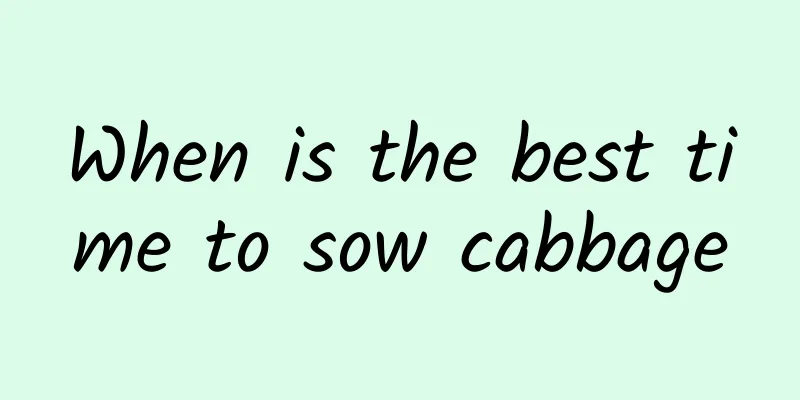What are the cultivation methods and precautions of hibiscus flowers?

Hibiscus cultivation methodHibiscus is a common shrub flower species, widely planted in China. It is 3-4 meters tall, with twigs densely covered with yellow star-shaped hairs. The most common method of propagation is cuttings. Hibiscus likes a warm and humid environment, has strong adaptability to soil, is resistant to barrenness, and can grow in heavy clay, but it is best to provide fertile and loose soil. It is relatively cold-resistant, but warming measures need to be taken in northern regions. Hibiscus is a sun-loving plant, and the maintenance environment should not be too dark. Water it more often when the air is dry, and control the amount of watering to avoid water accumulation. Fertilize it during the growth period and before flowering, generally with phosphorus fertilizer and potassium fertilizer. If pests occur, spray pesticides in time. Watering methodHibiscus likes a humid growing environment and needs to keep the soil moist. When there is little water or no rain for a long time, it needs to be watered frequently. However, it also does not like too much water. After the rain, drainage measures need to be taken. Remember that the soil in the pot should not be too moist. Fertilization methodWhen hibiscus sprouts, you can apply quick-acting fertilizer. Apply 1 to 2 times of phosphorus and potassium fertilizers before budding to promote the differentiation of flower buds. When it blooms from May to October, you can apply phosphorus and potassium fertilizers in combination with weeding, supplemented with nitrogen-containing substances. Pruning methodsWhen the branches and leaves of hibiscus grow densely, it will affect its photosynthesis in the sun. At this time, it is necessary to trim the dense parts appropriately so that the branches and leaves can get better light. Then the twisted stems can be trimmed appropriately, leaving only 2 to 3 cm. Hibiscus cultivation precautionsHibiscus has fewer diseases and pests, but it will still appear if it is not properly maintained. The harmful insects mainly include the moth, fall armyworm, longhorn beetle, etc. Maintain good ventilation and maintain a moderate temperature. When harmful insects are found, you can use non-toxic and effective fungicides to prevent and kill them. |
<<: What are the cultivation methods and precautions of Gardenia jasminoides
>>: What are the cultivation methods and precautions of umbrella bamboo?
Recommend
Common diseases and prevention methods of wintersweet
Chimonanthus anthracnose symptom The disease most...
Can raspberries be grown in pots?
Can raspberries be grown in pots? Raspberries can...
Can Gardenia remove formaldehyde?
1. Little effect Gardenia has basically no effect...
The efficacy and contraindications of Hibiscus tea
Benefits of Hibiscus Tea 1. Detoxification and di...
What does cherry blossom represent?
1. Meaning Cherry blossoms represent warmth, happ...
What to do if the axe-leaf peperomia grows too tall
Insufficient light Axe-leaf peperomia has the hab...
Corn planting and harvesting time
Corn planting time Corn is suitable for planting ...
Which month is the best for cuttings of Huangguolan?
Cutting time of yellow fruit orchid When taking c...
How much is a pound of mangosteen? Pictures of mangosteen
1. How much is one pound Ordinary mangosteens sol...
The plums are a bit small, what kind of fertilizer is good? (What fertilizer should be applied to the plum tree to make it sweet)
What fertilizer is better for plums? Plum is a co...
You don’t have to grow any other flowers in autumn, except this kind. Even 100 pots are not too many!
How to propagate chrysanthemums by cuttings? ① Ch...
The value of the flame tree
The ornamental value of flame tree When talking a...
How to grow Schefflera in winter
1. Do not water heavily When raising plants in wi...
Learn it quickly! The secret of flower-growing that has been passed down for 50 years is about to be lost!
Bury a plastic bottle in the soil and apply ferti...
Can the lucky tree be watered with vinegar?
The lucky tree can be watered with vinegar The lu...









